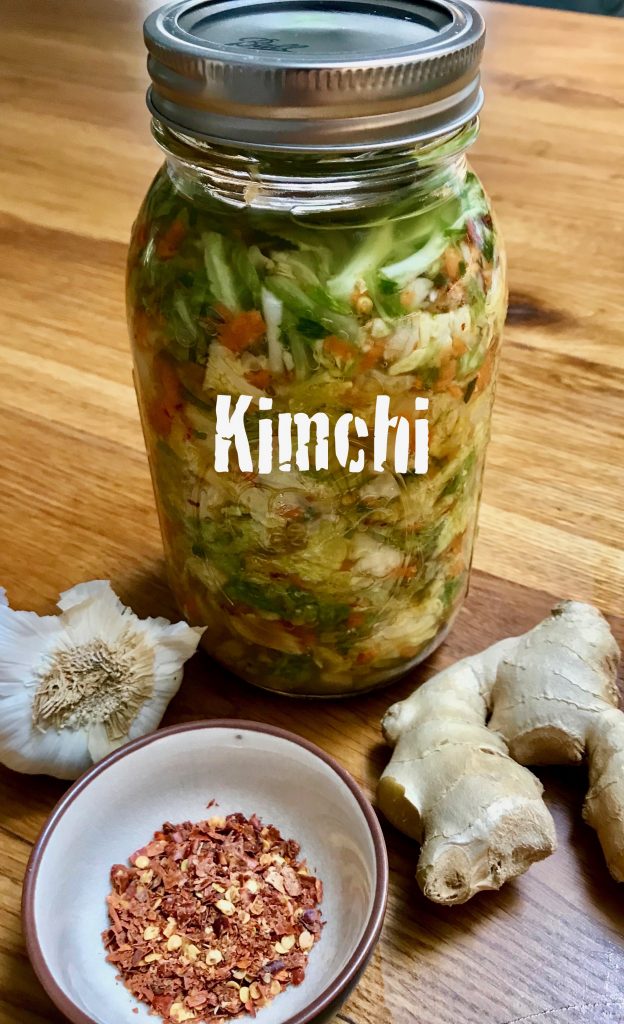
Kimchi is a Korean staple, most often consisting of spicy, fermented cabbage. It’s a pre and probiotic, full of beneficial micro-organisms which are thought to be helpful in supporting our gut microbiome.
Home fermenting is relatively easy to do. You can buy specialist preserving equipment if you want, but really all you need (other than the raw ingredients, bowl, chopping board and knife) is a glass jar and some kind of weight to submerge the prepared vegetables in a brine. You can buy specific glass fermentation weights, or alternatively you can just use a robust plastic bag filled with brine (eg. a ziplock freezer bag which can be washed and reused).
Ingredients:
- 1 cabbage
- Fine sea salt – 1/4 cup (approx 60g)
- Chilli flakes – 1-2 teaspoons
- Garlic – 4 cloves
- 1 tablespoon fresh ginger – grated
- Seaweed flakes – 1 tsp (optional)
- Maple syrup – 1 tsp
- Sweet paprika – 1 tsp
- 2 small carrots – grated
- 1 bunch spring onions – chopped
Instructions:
- Wash the cabbage, remove the outer leaves and set these aside
- Chop the cabbage up into approximately 1-2cm slices and place in a large bowl
- Dissolve 1/4 cup of sea salt in 1000ml of cold water to make a brine
- Pour this over the cabbage and place a plate over the cabbage to make sure it stays submerged in the brine
- Allow to soak overnight or for approximately 6-8 hrs
- Drain the cabbage and reserve the brine
- Rinse the cabbage in cold water, pressing some of the liquid out
- Add the grated carrot and chopped spring onion to the bowl and mix with the cabbage
- Place the chilli flakes, garlic, ginger, paprika, seaweed and maple syrup in a blender and blend together to a rough paste
- Add the paste to the cabbage mix and use your hands to combine thoroughly
- Now pack the mixture tightly into a clean preserving jar, leaving a few centimetres clear at the top of the jar
- Cover the mixture with one of the outer cabbage leaves and pour some of the reserved brine into the jar so that the contents are just covered in liquid
- Place a fermentation weight on top of the leaf to help ensure everything remains submerged in the brine. If you don’t have a fermentation weight, take an empty freezer bag, place it inside the jar on top of the mixture, open it and part fill it with some brine, until it fills the remaining space in the jar, then seal the bag
- Place a lid lightly on the jar (don’t screw it on tight) and leave in a cool place out of direct sunlight (put the jar on a plate or bowl in case of overflow)
- It’s normal to get carbon dioxide bubbles or a foam forming on top of the mixture
- After approximately 5 days, transfer the jar to the fridge
- The kimchi should taste pleasantly sour and its flavour should continue to develop over time
- However, if it’s mouldy, slimy or tastes bad, put it on the compost!
